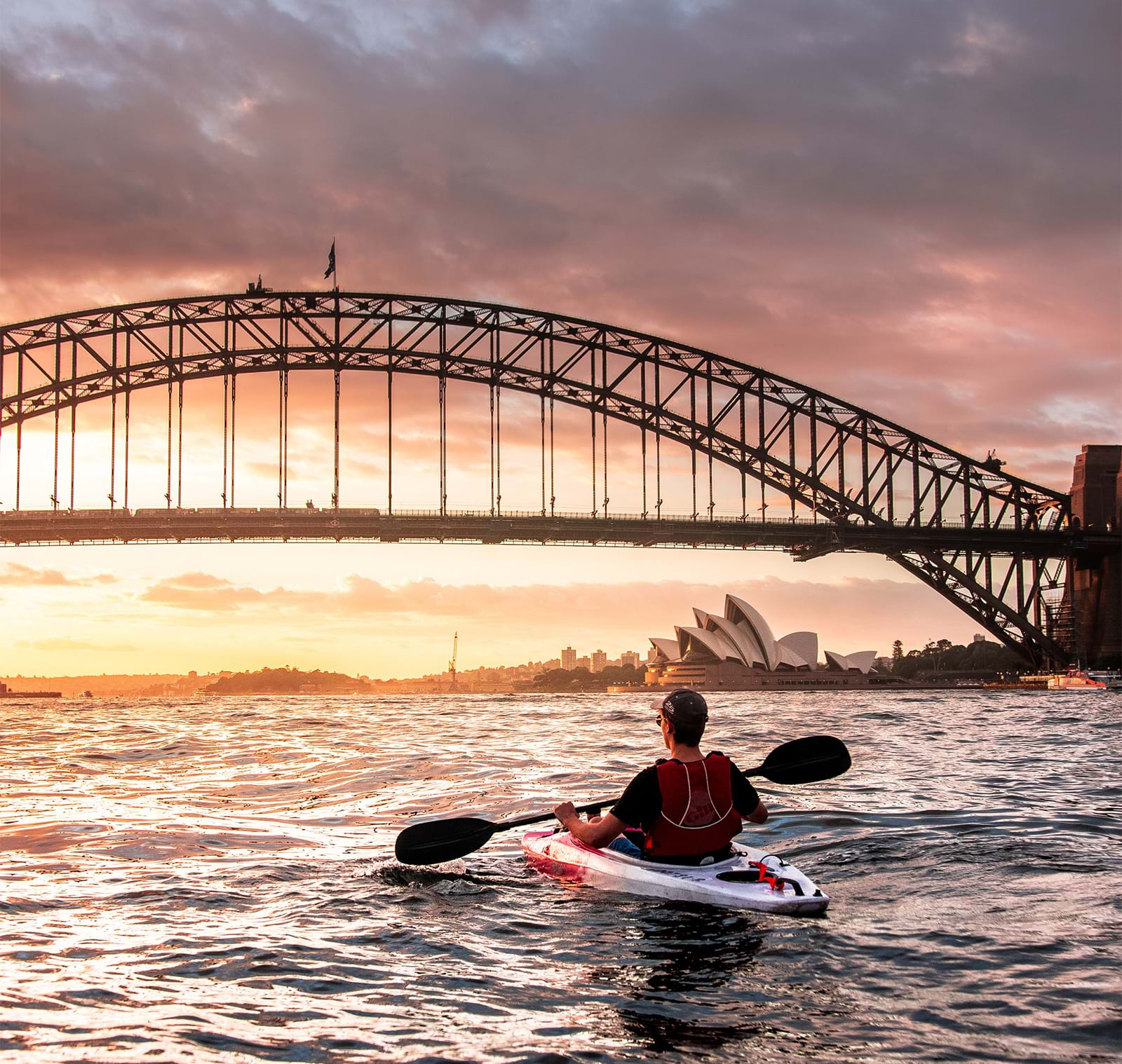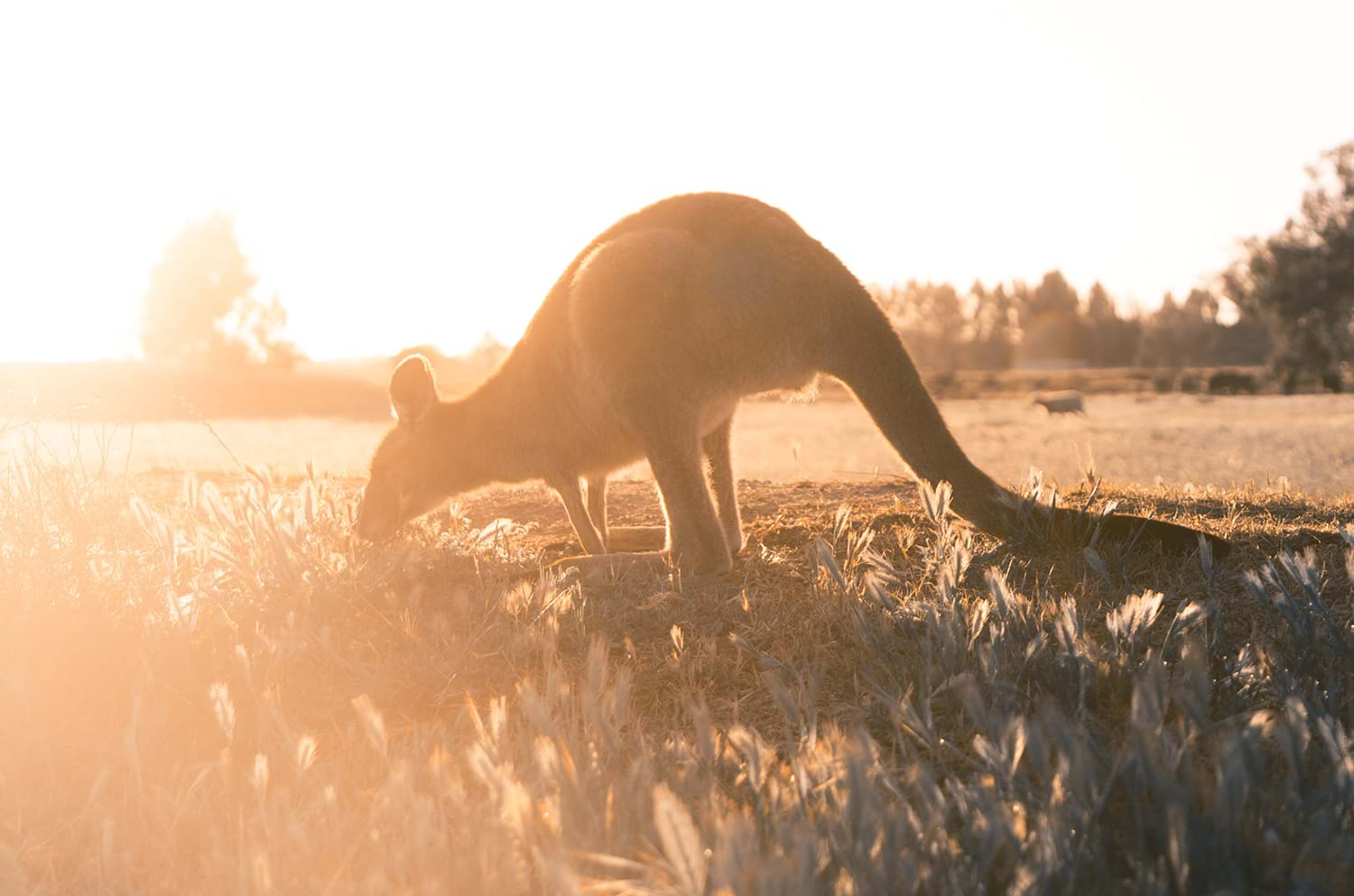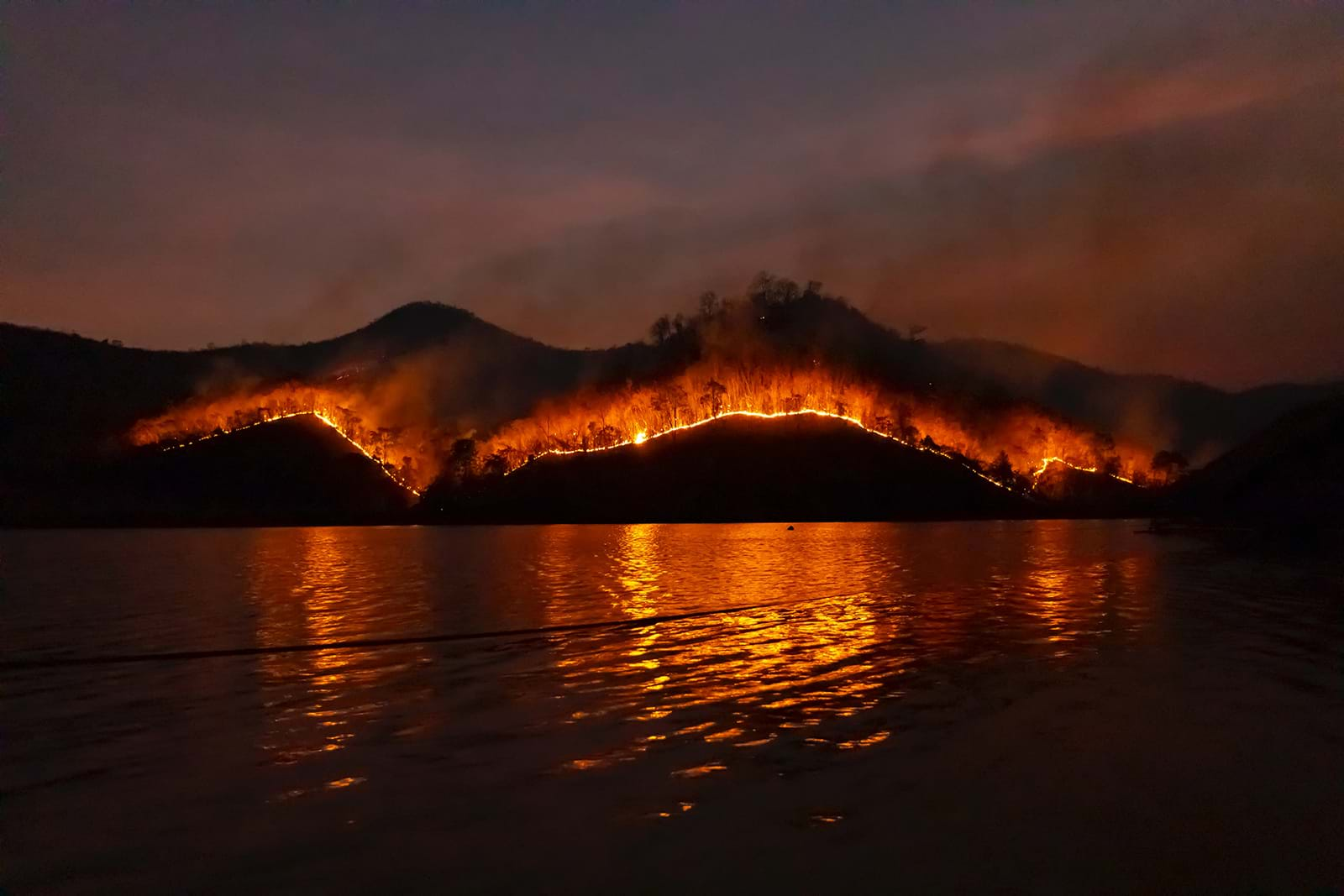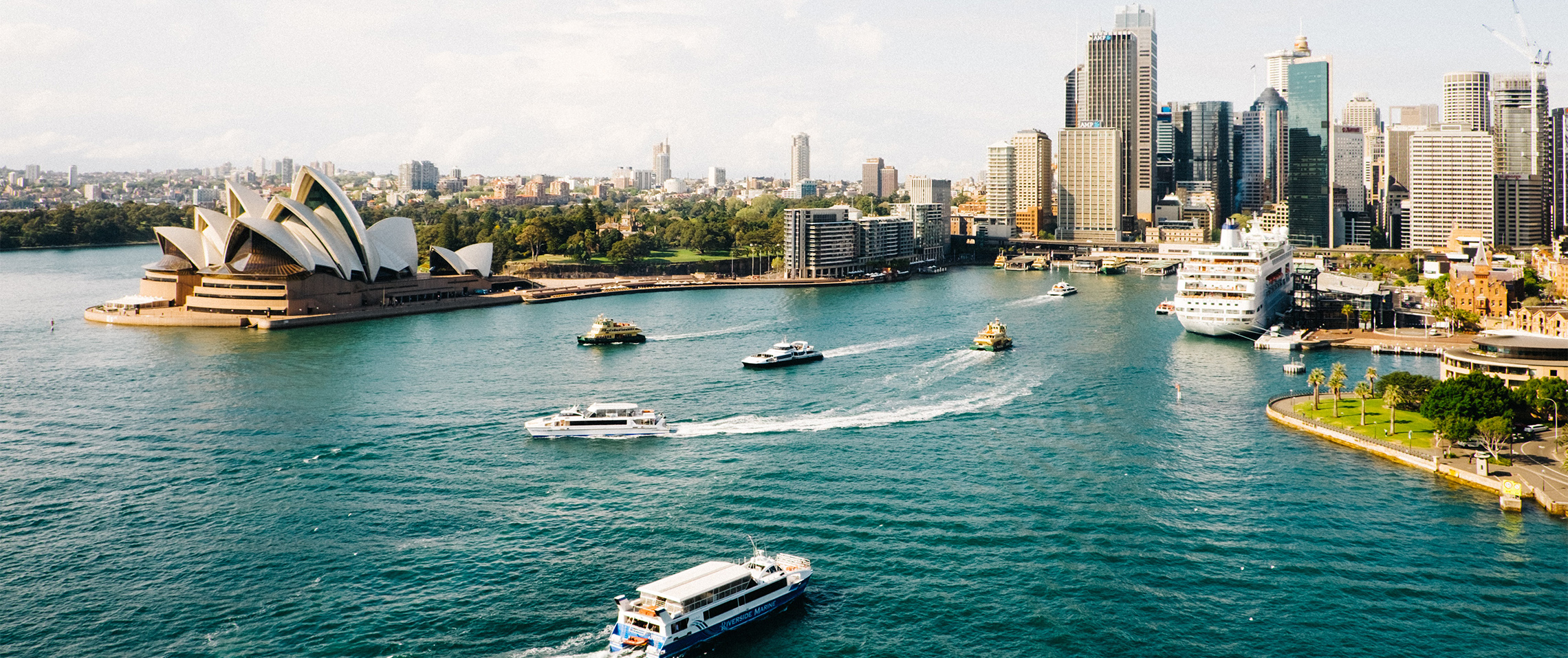Australia Travel Safety By The Numbers
We noted the Safest Places ratings from Berkshire Hathaway Travel Protection. Breaking them down a bit more, the country gets the highest safety marks from parents, with LGBTQIA+ travelers leaving the country off its list altogether.
Other independent ratings confirm BHTP’s assessment.
Australia came in 11th out of 134 countries on the Global Finance list of the world’s safest countries, and 18th out of 163 in the annual Global Peace Index.
The State Department gives Australia its best level-1 rating (“exercise normal precautions”), while Numbeo lists Australia as the 82nd-safest country in the world out of 142.
Finally, city safety scores from GeoSure range from 81 for Adelaide to 97 for Canberra. These are high scores no matter where in the world you happen to be.
Those are a lot of numbers that lead to one inescapable conclusion: Australia is a really safe destination for travelers.
 Photo by Mads Schmidt Rasmussen on Unsplash
Photo by Mads Schmidt Rasmussen on Unsplash
What Travelers Should Watch For In Australia
Given all that safety stuff, you might think you can go gallivanting merrily through Australia without a thought to safety. It’s not quite as simple as that.
Australia is a diverse country, and with that diversity comes particular safety challenges, depending on where you travel.
What to watch for in Australia's cities
As the GeoSure and Numbeo rankings point out, Australia’s cities are quite safe, relatively speaking – but relative in comparison to a lot of cities that aren’t exactly safe.
What goes in all those cities goes for Australian cities, namely:
- Wear purses across your body and keep backpacks at your feet or in front of you.
- Consider “pickpocket-proof” clothing or a money belt if you’re going to be spending a lot of time in crowded areas.
- Watch yourself in bars. Drink-spiking is not a particular danger but can happen. Bar brawls are more common.
- Avoid walking by yourself at night in poorly lit areas.
In general, common sense and caution go a long way in Australian cities.
 Photo by Christopher Burns on Unsplash
Photo by Christopher Burns on Unsplash
Safe transportation in Australia
Australian transportation is safe, clean, and efficient. Mass transit is a safe, inexpensive way of getting around cities, and even driving isn’t terrible.
If you plan on driving in Australia, note that each Australian state has its own laws about foreign drivers. Learn more here.
Finally, remember that Australia is a right-hand-drive country, with traffic on the left side of the road.
This can be really disconcerting, so it’s a good idea to do your first miles of Australian driving somewhere other than on busy city streets or highways.
Travel safety in Australia's outback
The Australian bush is very hot, dry, and desolate, with few towns and services.
When driving through the outback, carry plenty of water and other provisions. Per the State Department, “be alert to free-roaming animals, such as kangaroos, and ‘road-trains’ (several semi-truck trailers connected together).”
If hiking through the bush:
- Carry a cell phone (though service may be spotty)
- Pack plenty of water
- Wear lots of sunscreen
- Let people know where you’re going and when you plan to get there
Rock-climbing in the outback can be dangerous, and medical help may be hundreds of miles away, and very expensive. Travel insurance with emergency-medical-evacuation coverage can help.
Australia's coastline and the water
Depending on your perspective, Australia is either a very large island or a very small continent. Either way, it has a lot of coastlines – 16,020 miles, to be exact.
While all that coastline offers lots of beach opportunities, it also means a lot of areas with water hazards.
In the water are sharks, rays, lots of jellyfish, and the extremely poisonous blue-ringed octopus, in addition to sharp coral that can slice open a diver’s hand or foot.
Then there’s the water itself. It attracts divers from all over the world, with a fair number of diving accidents and deaths.
To avoid becoming an Australian diving statistic, never dive alone, and make sure all your equipment is at peak performance before starting your dive.
The Surf Life Saving website has more information on biting and stinging aquatic creatures and Australian beach safety.
Australia's rainforests and wildlife
Australia has an incredible amount of biodiversity, and while much of it is cute (koalas and wallabies) or weird (platypi), some of it is dangerous.
Falling into the “dangerous” category are:
- Crocodiles
- Venomous snakes
- Feral pigs and dogs
- Bizarre invasive species (yellow crazy ants, anyone?)
Australia’s rainforests are unique and spectacular, but must be navigated with care – not only for the possibility of encounters with poisonous creatures, but out of respect for the ecosystem.
Plan your rainforest excursions carefully. Start by visiting the Wet Tropics Management Authority website for guidance. As with the outback, travel insurance with coverage for emergency evacuations is a must.
Natural disasters in Australia
Australia is susceptible to cyclones and super typhoons, roughly equivalent to North American hurricanes. Obviously, coastal cities are most impacted, but inland flooding is a danger.
Otherwise, fires are the biggest natural-disaster concern in Australia.
Australia has brush fires every year. Like California, Australia has a rainier season where underbrush can grow quickly. Also like California, Australia has a drier season where the underbrush dies and dries, making it perfect fire-starting material.
In 2019, dry weather and poorly controlled burns led to a series of extremely severe fires that were 50 times bigger than California’s largest recorded wildfire, charring more than 37,500 square miles across southern and eastern Australia. That’s an area bigger than Portugal!
The major impact of Australian wildfires is reduced air quality in the cities. Travelers – especially those with heart or respiratory illnesses – should be aware of the danger and make preparations to remain indoors.

Photo by Sippakorn Yamkasikorn from Pexels
Travel Insurance And Australia
It’s a good idea to buy travel insurance if you’re headed to Australia, but it’s also good to know what travel insurance can cover for such a trip. BHTP offers coverage for various reasons, like:
- Trip Interruption and cancellation
- Emergency health insurance
- Emergency medical evacuation
Trip interruption and cancellation
Most travel insurance plans from BHTP will cover you if your destination is made uninhabitable – however, in the case of fire or severe storms, what does “uninhabitable” mean?
Obviously, if the area where you were supposed to stay is under an evacuation order, that’s uninhabitable. If your hotel has flooded or has burned, that’s uninhabitable. If your hotel is still standing but it’s impossible to get to, that’s also uninhabitable.
But what if the air quality is so bad that it poses a severe health risk? The answer is yes, that would most likely be a covered reason for trip cancellation or interruption – but make sure of that with your travel-insurance company before you leave … and get it in writing.
Emergency health insurance
If you have to go to the emergency room or seek other medical treatment because of disaster-related illnesses or injuries, that would also be covered.
Even if the disaster exacerbated a pre-existing condition and you didn’t have coverage for pre-existing medical conditions, it would still be covered, since the condition’s flare-up was caused by a natural disaster.
Emergency medical evacuation
Travelers who become sick or injured and have to be evacuated from a fire or flood zone can be reimbursed for the costs of the evacuation (up to the policy limit) under most BHTP plans.
Luggage
Most BHTP plans offer reimbursement for luggage and its contents damaged by fire or flood. Either take a picture of the contents of your bags or save receipts to expedite the reimbursement process.
The Bottom Line On Australia's Travel Safety
Australia is a safe country – but unsafe things can happen even in the safest of countries. Travel, enjoy, but understand the risks.



 Photo by Christopher Burns on Unsplash
Photo by Christopher Burns on Unsplash